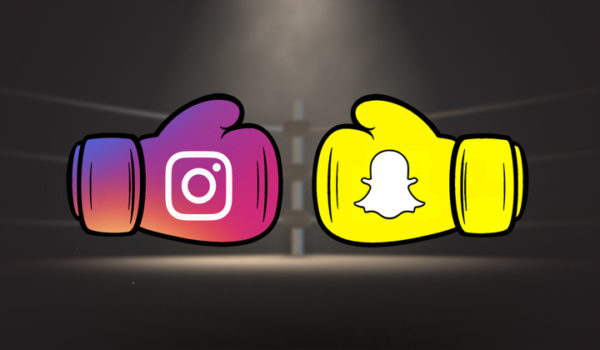Being a member of the University of Michigan Social Media Department comes with a lot of responsibility. Which social media platform should be used for what content? Is Twitter or Facebook more appropriate for a statement about an incident on campus? Should we use Instagram or Snapchat to cover an event? These decisions are made daily, hourly, and even sometimes by the minute.
At UMSocial, choosing when to use Instagram versus Snapchat relies on a few specific components. We review which audiences we are trying to reach, the type of message we want to convey, and the nature of the content we’ll be sharing.
Instagram, while holding its own as a photo sharing app, has only recently started incorporating features that have been used by Snapchat for some time. However, Instagram found a way to up the game by offering higher quality story making. With 166 million users daily on Instagram (Hartmans, 2017) it is no surprise that the “Social Stories” debate is a hot topic. But what factors matter most when using social media in a professional context, as we do, representing the brand of a nationally ranked university?
With the incorporation of social stories into its platform, Instagram has been the go-to social choice when striving to reach the U-M community at large. It is the best platform to use when trying to capture wider audiences, especially when the messages are of great significance. We often choose Instagram for “corporate” content, mostly because of Instagram’s features allow you to present your content in a more visually way. Also, the options to “shake things up” visually through video features such as Boomerang can be a great way to keep viewers engaged.
Snapchat, on the other hand, doesn’t take itself too seriously, which can be seen in many ways. Snapchat tends more toward a whimsical approach to content, which is why we prefer to use it for promotion or coverage of events with high student involvement. It leaves for room for fun and inclusion. Snapchat also provides playful features appropriate when reaching out to young adults, including geofilters and augmented realities (Bitmojis). The option to generate geofilters for events increases student involvement, since students will include them in their own stories, as well as add them to ours. The ever-changing augmented-reality features are a lighthearted way for us to keep up with social trends and interact virtually.
Each platform offers unique perspectives and tools to help us reach all our audiences. At UMSocial, we value having many contrasting social media platforms to employ, so we can select exactly the right vehicle for each audience segment, and represent the U-M brand appropriately.,
Hartmans, Avery. (2017). We compared Snapchat and Instagram to find out which app is better; here’s the winner. Business Insider.
As always,
Be social. Stay social. #UMSocial
Post written by McKenna Whipple, Social and Digital Media Content Specialist at UMSocial.



